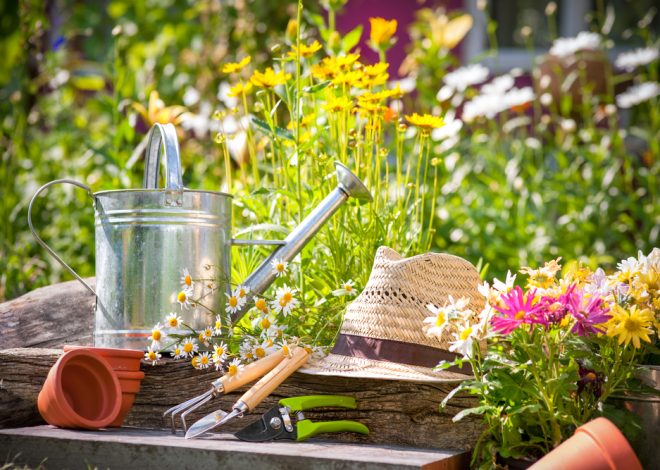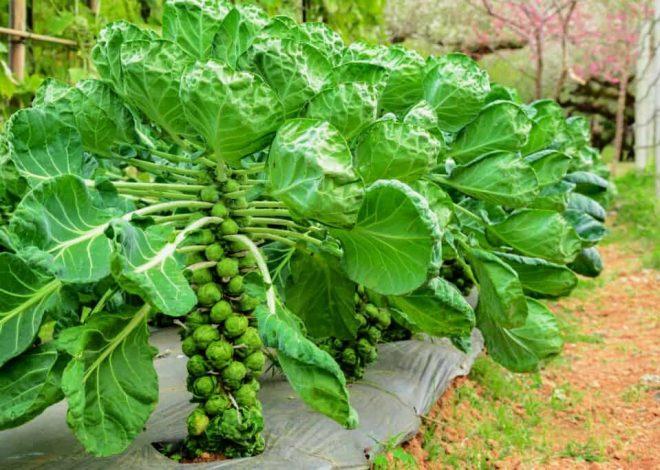
The Ultimate Guide to Indoor Pots & Planters
Tired of the monotonous beige and stark minimalism that dominates modern decor? Craving a space that feeds your soul, that whispers of nature’s tranquility even as the city roars outside? Indoor plants are the answer, and transforming your home into a thriving green haven is easier than you think. choosing the right pots and planters for your leafy companions can feel like navigating a botanical maze. Drainage woes, size mismatches, and clashing aesthetics can quickly turn your jungle dream into a wilting nightmare.
Fear not, fellow urban explorers! This comprehensive guide is your compass, your machete, and your sun-drenched clearing in the concrete jungle. We’ll demystify the world of indoor pots and planters, equipping you with the knowledge and inspiration to create a thriving, soul-enriching oasis in your own home.
Choosing the Perfect Pot: A Vessel Fit for a Foliage King (or Queen)
The humble pot – it may seem like a mere container, but it’s the foundation of your plant’s kingdom. Choosing the right vessel is vital for your leafy friend’s happiness and health, influencing everything from root growth to drainage, and even aesthetics. So, let’s embark on a material safari and discover the hidden powers of different pot options!
Ceramic Chic:
Imagine a sleek, glazed ceramic pot, its smooth surface catching the sunlight and reflecting the emerald hues of your monstera. Ceramic boasts excellent breathability, allowing moisture to evaporate and preventing root rot. But beware its non-porous nature necessitates drainage holes. Luckily, modern ceramics often come with them built-in. For low-maintenance plants, consider pairing them with ceramic saucers to catch excess water.
Terracotta Tales:
Earthy and rustic, terracotta pots evoke a sense of Mediterranean sunshine. This porous material absorbs excess moisture, making it ideal for drought-tolerant plants like cacti and succulents. However, remember that terracotta dries out quickly, so keep your watering can handy! Bonus tip: pre-soak new terracotta pots to minimize water absorption and prevent root dehydration.
Plastic Prowess:
Don’t underestimate the humble plastic pot! Lightweight and affordable, it comes in a variety of colors and sizes, offering flexibility for diverse plant needs. Just ensure it has drainage holes, and remember that plastic tends to retain moisture longer, so adjust your watering schedule accordingly. Opt for BPA-free plastics for peace of mind and avoid placing them in direct sunlight, as they can warp or crack.
Metal Marvels:
For a modern touch, metallic pots add a touch of industrial chic to your space. However, tread carefully: metal conducts heat efficiently, which can scorch roots in hot weather. Stick to smaller sizes for succulents and air plants, and consider placing felt or cork padding between the pot and the soil to insulate roots. Remember, metal doesn’t breathe, so drainage holes are crucial!
Woven Wonders:
Feeling bohemian? Woven baskets made from natural materials like wicker or straw offer a unique, earthy charm. However, they pose unique challenges. While their breathability is excellent, they lack drainage. To remedy this, line the basket with a plastic liner with drainage holes, or place the plant in a separate pot inside the basket. Remember, natural materials can rot or harbor pests, so keep an eye out and replace them when needed.
Beyond the Material:
Size matters! Choose a pot that allows your plant enough room for root growth, but not so much that the soil dries out excessively. A general rule of thumb is to choose a pot 2-3 inches larger than the root ball diameter. And don’t forget drainage! Drainage holes allow excess water to escape, preventing root rot. If your pot lacks them, don’t fret – you can add them yourself with a drill and a bit of elbow grease.
Plant Pairings & Styling Symphony: Orchestrating a Thriving Indoor Jungle
Light & Water Harmony:
The first movement of our symphony begins with understanding the light and water needs of our leafy performers. Group plants with similar requirements together to simplify care. For instance, low-light lovers like snake plants and philodendrons can share a shady corner, while sun-worshipping succulents and cacti can bask in a sunny windowsill. Remember, light intensity changes throughout the year, so adjust plant placements accordingly.
Theme & Color Crescendo:
Let your creativity crescendo with themed mini-gardens! Imagine a tranquil Japanese-inspired corner with cascading ferns, miniature bamboo, and moss-covered rocks. Or picture a vibrant tropical haven bursting with bromeliads, air plants, and colorful caladiums. Play with textures and heights, combining trailing vines with upright pothos or layering ferns on tiered stands. Don’t shy away from color! Use contrasting foliage or blooming orchids to add pops of vibrancy.
Placement & Display Finale:
The final movement of our symphony showcases your botanical masterpieces. Hanging baskets filled with trailing ivy like a curtain of green, macramé hangers suspending air plants like dancing ballerinas, or repurposed vintage suitcases transformed into mini terrariums – the possibilities are endless! Let your personality shine through. Mount staghorn ferns on wooden boards for a rustic touch, and arrange succulents in geometric planters for a modern vibe.
Conclusion:
As you stand amidst your thriving indoor garden, sunlight dappling the leaves and the air alive with the gentle hum of a thriving ecosystem, a sense of accomplishment washes over you. You’ve transformed your space from a sterile shell into a sanctuary of green, a testament to your patience, curiosity, and newfound botanical expertise. But remember, this isn’t the end of the journey, it’s the beginning of a beautiful partnership with nature. Let’s savor the final bloom of your indoor jungle creation and explore the ongoing magic it holds.
Beyond Aesthetics: The Benefits of Breathing Green
Your indoor oasis isn’t just aesthetically pleasing; it’s a haven for both your physical and mental well-being. Studies have shown that indoor plants purify the air by removing toxins and increasing humidity, leading to improved respiratory health and reduced stress levels. The vibrant greens and natural textures soothe the soul, lowering anxiety and boosting mood. In essence, you’ve built a mini-sanctuary that nourishes your body and mind in equal measure.
Caring for the Caretakers: Nurturing Your Botanical Bond
Just like any relationship, your leafy companions thrive on attentive care. Continue your research journey, delving deeper into the specific needs of your plant family. Learn their quirks, their preferred watering schedules, and how to identify subtle signs of stress or joy. As you tend to their needs, you’ll cultivate a deeper connection with nature, witnessing its resilience and celebrating its growth. Remember, caring for plants is a form of mindfulness, a moment of daily focus that grounds you in the present and reminds you of the interconnectedness of life.
Frequently Asked Questions
How often should I water my indoor plant?
There’s no magic formula, as water needs vary based on plant type, pot material, soil, and even the season. However, here’s a handy trick: stick your finger in the soil! If the top inch feels dry, it’s watering time. If it’s still damp, hold off for a bit. Remember, different pots dry at different rates – terracotta dries faster than plastic, so adjust accordingly. Also, research your specific plant’s needs as some, like succulents, prefer a desert-like drought, while ferns crave constant moisture.
Should I use tap water on my plants?
It depends! Tap water can contain chemicals like chlorine and fluoride that can harm some sensitive plants. If you’re unsure, opt for filtered or rainwater. Bonus points for collecting rainwater in a fun decorative container – your plants will thank you!
How do I choose the right size pot for my plant?
Think Goldilocks – not too big, not too small! A pot that’s too big can lead to root rot, while one that’s too small will restrict growth. Aim for a pot 2-3 inches larger in diameter than the root ball. If you’re unsure, it’s better to start smaller and repot when the roots start circling the inside.
What if my pot doesn’t have drainage holes?
Drainage is crucial! Excess water can suffocate roots and lead to disease. Don’t despair! If your pot lacks drainage, you can add some yourself using a drill or a hot poker (be careful!). Alternatively, place the pot on a saucer with drainage holes and empty it regularly to prevent waterlogging.
How much light does my plant need?
Plants are like sunbathers with varying degrees of tolerance. Some, like cacti and succulents, love to bask in direct sunlight, while others, like ferns and philodendrons, prefer gentle shade. Research your plant’s specific needs and adjust their location accordingly. Remember, light intensity changes throughout the year, so be prepared to move your leafy friends occasionally
How do I deal with low-light areas?
No worries, shade-loving plants are your new best friends! Opt for low-light superstars like snake plants, peace lilies, and ZZ plants. You can also strategically place mirrors to reflect light or invest in grow lights for particularly dark corners.
My plant isn’t thriving, what could be wrong?
Don’t panic Consider these factors: Light Is your plant getting enough (or not enough).





